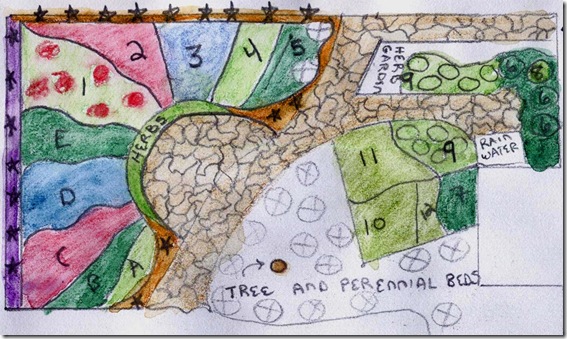Бораго - огуречная трава- окопник - разные растение из одного семейства.
Я об окопнике.
Английское название растения "comfrey".
Окопник - идеально подходит для большинства растений как удобрение - его зеленая масса кроме азота богата еще и калием и по содержанию этого элемента превосходит втрое навоз.
В качестве бонуса - листья окопника привлекают слизняков и улиток. Если разложить их вокруг молодых растений, таких как салат, вы отвлечете злодеев.
В Англии окопник используют в трех направлениях.
Во-первых, его просто добавляют в компостную кучу- он обогощает ее и к тому же он ускоряет разложение материала компостной кучи.
Второе - используют листья окопника как мульчу под, скажем, ваши помидоры. Это действует как любая другая мульча - замедляет испарение влаги, подавлеет сорняки и плюс - обогащает почву.
Третье - окопник как жидкое удобрение.
Для этого, заполните контейнер листьями окопника и залейте его до краев водой. Листья скоро превратятся в отталкивающее пахнущий ил. Это мерзкое зловоние указывает, что белки - а окопник имеет больше белка в листьях, чем любое другое растение - начинают разлагаться.
Через две недели смесь будет как зеленовато-коричневый суп и будет готова к использованию.
Процедите ее, зеленую массу - на компостную кучу а жидкость - в качестве основы для удобрения - разбавлять - 1:10.
Вы можете использовать его распыляя на листья или поливать корни.
Ваши растения не будут супер большими, но они будут здоровыми - это то что вам нужно.
А вот здесь много больше информации для любопытных.
Еще и здесь.
Наши..или наоборот наверное "ненаши" англичане советуют траву не заливать водой, а просто придавить кирпичом в емкости с крышкой на 6 недель и использовать выделившуюся жидкость- 1:10 - тогда без запаха или как я полагаю будет его меньше. Надо попробовать.
На жидкое удобрение можно использовать листья папоротника, клевера, крестовника, крапивы, огуречной травы, цикория и клубники.
Я об окопнике.
Английское название растения "comfrey".
Окопник - идеально подходит для большинства растений как удобрение - его зеленая масса кроме азота богата еще и калием и по содержанию этого элемента превосходит втрое навоз.
В качестве бонуса - листья окопника привлекают слизняков и улиток. Если разложить их вокруг молодых растений, таких как салат, вы отвлечете злодеев.
В Англии окопник используют в трех направлениях.
Во-первых, его просто добавляют в компостную кучу- он обогощает ее и к тому же он ускоряет разложение материала компостной кучи.
Второе - используют листья окопника как мульчу под, скажем, ваши помидоры. Это действует как любая другая мульча - замедляет испарение влаги, подавлеет сорняки и плюс - обогащает почву.
Третье - окопник как жидкое удобрение.
Для этого, заполните контейнер листьями окопника и залейте его до краев водой. Листья скоро превратятся в отталкивающее пахнущий ил. Это мерзкое зловоние указывает, что белки - а окопник имеет больше белка в листьях, чем любое другое растение - начинают разлагаться.
Через две недели смесь будет как зеленовато-коричневый суп и будет готова к использованию.
Процедите ее, зеленую массу - на компостную кучу а жидкость - в качестве основы для удобрения - разбавлять - 1:10.
Вы можете использовать его распыляя на листья или поливать корни.
Ваши растения не будут супер большими, но они будут здоровыми - это то что вам нужно.
А вот здесь много больше информации для любопытных.
Еще и здесь.
Наши..или наоборот наверное "ненаши" англичане советуют траву не заливать водой, а просто придавить кирпичом в емкости с крышкой на 6 недель и использовать выделившуюся жидкость- 1:10 - тогда без запаха или как я полагаю будет его меньше. Надо попробовать.
На жидкое удобрение можно использовать листья папоротника, клевера, крестовника, крапивы, огуречной травы, цикория и клубники.

